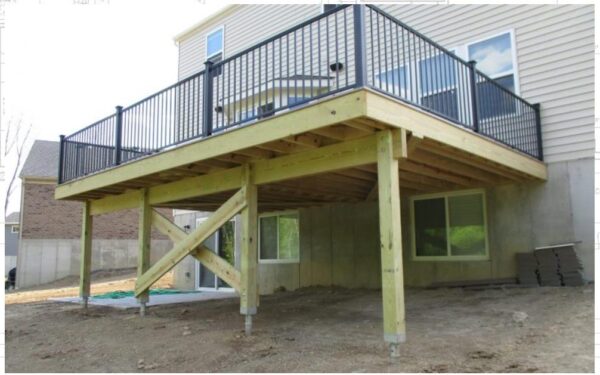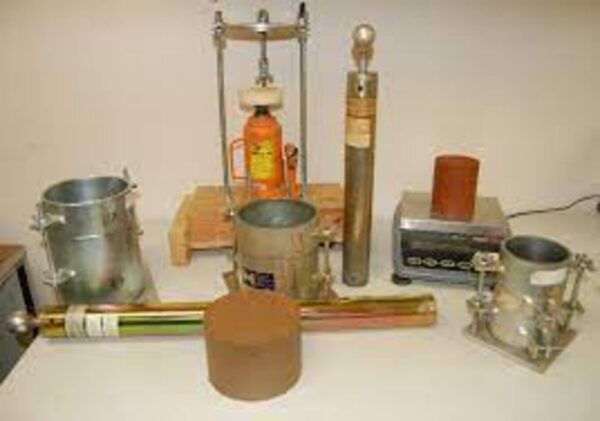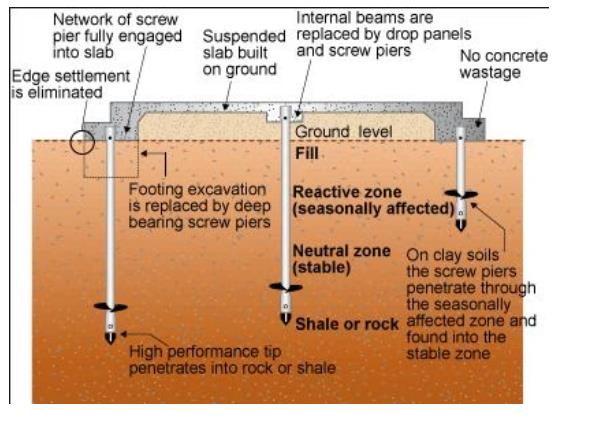Have you noticed cracks in your home’s walls or floors? Do doors or windows stick for no apparent reason? If so, your foundation may be settling.
Foundation settlement is a common issue that occurs when the ground underneath a building’s foundation compacts over time.
This settling can lead to cosmetic damage like cracks and sticking doors, or major structural issues if left unaddressed.
Foundation settlement can cause serious home damage .
Learn to identify different types of settlement, what causes them, early signs to look out for, estimated repair costs, and methods for fixing it.
Foundation settlement is a significant issue for homeowners that can lead to cracked walls, jamming doors and windows, and uneven floors over time if left unaddressed.
As a home shifts and settles, the results can be costly.
Foundation Settlement Repair Cost
How much does it cost to repair a settled foundation? Unfortunately, it’s not a cheap fix.
Costs typically range from $4,000 to over $20,000 depending on the severity, type of foundation, and size of the home needing repaired.
Key factors determining foundation repair costs include:
- Degree of structural damage – Extensive repairs due to cracks or failed load-bearing elements raise costs.
- Access and site aspects – Tough access for equipment or complex drainage installation also ups repair bills.
- Foundation type – A slab foundation often costs less than basements/crawlspaces to lift and stabilize.
- Area of the home’s foundation – Larger homes mean more foundation to repair.
While not inexpensive, the structural necessity makes most homeowners cough up the money for proper foundation repairs before the issues get out of hand.
Settlement Cracks in New Houses
It may come as a surprise that new homes are also susceptible to foundation issues. Some key indicators in new construction stem from:
• Improper Curing Times – The concrete foundation didn’t cure adequately before weight was added, causing weaknesses.
• Shrink/Swell Soils – Expansive soils underneath weren’t properly prepared for new construction.
• Drainage Issues – Surface runoff wasn’t directed away from the foundation, eroding soils.
Minor cracks might occur but aren’t always indicative of immediate settlement.
However, larger fissures, brick/drywall cracking, and sticking doors warrant an inspection to identify causes and determine necessary repairs.
Differential Settlement Repair
Differential settlement occurs when one part of a foundation sinks substantially deeper than the rest.
This often creates visible cracks or shifts to walls/floors in the transition zone.
Repairing differential settlement necessitates lifting the sunken foundation area with hydraulics and stabilizing the soils underneath, via compaction, injection, or pilings.
Shims are then installed to bridge any remaining gaps between the lifted and stable sections before connecting them with steel rebar and concrete.
Post-repair, the home requires monitoring for recurrence, as differential settlement can be tricky on active soils.

Early Signs of Foundation Problems
Catching foundation abnormalities early makes stabilization less complicated. Be on the lookout for:
- Cracks – Especially if rapidly worsening or located high on walls/ceilings.
- Sticking Doors/Windows – Possible sign of shifting due to uneven settlement.
- Floors or Stairways Out-of-Level – Indicate settling foundation if brand new.
- Bowing Basement Walls – Can signal soils expanding inward on the foundation.
Any observed moisture issues, leaks, or mold may also indicate drainage problems or soil erosion affecting the foundation’s stability as well.
Addressing these symptoms promptly can help avoid costly long-term damage.
Types of Foundation Settlement
The three main types of foundation settlement include:
• Uniform Settlement – The entire foundation sinks evenly.
• Differential Settlement – Only certain sections drop significantly.
• Localized Settlement – Isolated to one small area, like a pillar or isolated footing.
Each should be addressed differently:
- Uniform settlement requires leveling techniques like foundation jacking.
- Differential movement involves selective lifting, soil stabilization, and connecting settled areas.
- Local subsidence might need underlying soils compacted, filled, or reinforced.
Determining what category of settlement your home falls under is key for appropriate repairs.

Causes of Differential Settlement
Several issues contribute to differential foundation settlement, including:
• Moisture Changes – Seasonal wet/dry cycles causes shifting swell/shrink of expansive soils.
• Poor Compaction – Weak soil density under isolated footings allows localized sinking.
• Erosion – Leaking pipes or surface drainage problems undercut soils.
• Large Trees – Extensive root networks suck moisture from soils, condensing layers underneath.
• Poor drainage – Allows buildup of moisture content which destabilizes the soil bearing capacity.
Sometimes a combination of these moisture, drainage and erosion factors impact the soils supporting one area of foundation differently than surrounding soils.
Identifying the varying subsurface conditions through inspection allows targeting repair methods to stabilize soils prone to differential settlement accordingly.
How to fix foundation settlement
Here are the main steps involves:
- Identify Signs of Settlement
Start by checking for common signs of settlement like cracks in walls and ceilings, sticking doors/windows, sloping floors, etc.
The pattern of damage can indicate if settlement is uniform, differential, or localized.
- Determine the Cause
An inspection by an structural engineer is key to pinpoint what’s causing the foundation to settle.
Common causes include poor soil compaction, moisture changes, erosion, poor drainage, large trees nearby, etc.
- Stabilize the Soil
The soil underneath the settled parts of the foundation needs to be stabilized and reinforced so it can better support the home’s weight.
Methods like compaction, injection of stabilizing material, installing pilings, or soil reinforcement grids can accomplish this.
- Lift the Settled Foundation
Using specialty hydraulic jacks placed underneath the foundation, raise the settled sections so they are level with rest of the stable foundation.
Shims can help fill any small gaps between sections.
- Connect and Reinforce Sections
Once aligned, settled areas need to be firmly connected to stable sections with steel rebar and concrete to make the foundation act as a unified whole.
- Improve Drainage
Enhance drainage to divert water away and prevent erosion and moisture issues from re-destabilizing soils.
Downspout extensions, French drains, etc. can help significantly.
Regular inspections over the next few years are key to ensure repairs are holding strong.
Taking action quickly at the first signs of settlement gives the best change of restoring the integrity of the foundation with minimal cost and damage.
Conclusion
Settling foundations lead to substantial home damages without intervention. Cracks, sticking doors and windows, sloping floors, and bowing walls signify potential foundation issues.
Getting an early assessment allows matching the necessary repairs to the type of settlement occurring for the best stabilization results.
With diligent monitoring, many homes see no further settlement once the soils are properly compacted, reinforced, or re-leveled.
Paying attention to symptoms now can save thousands down the road.






